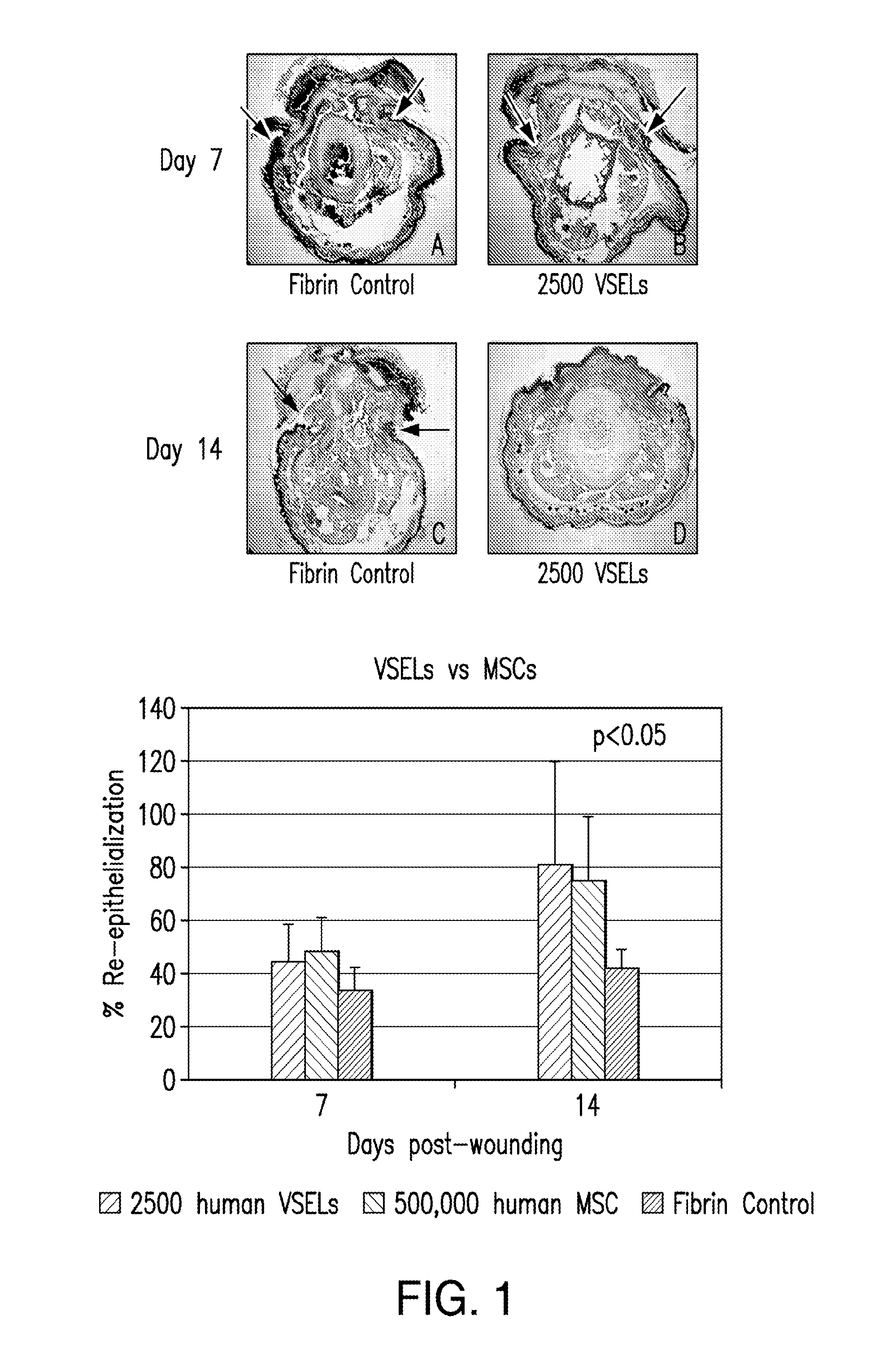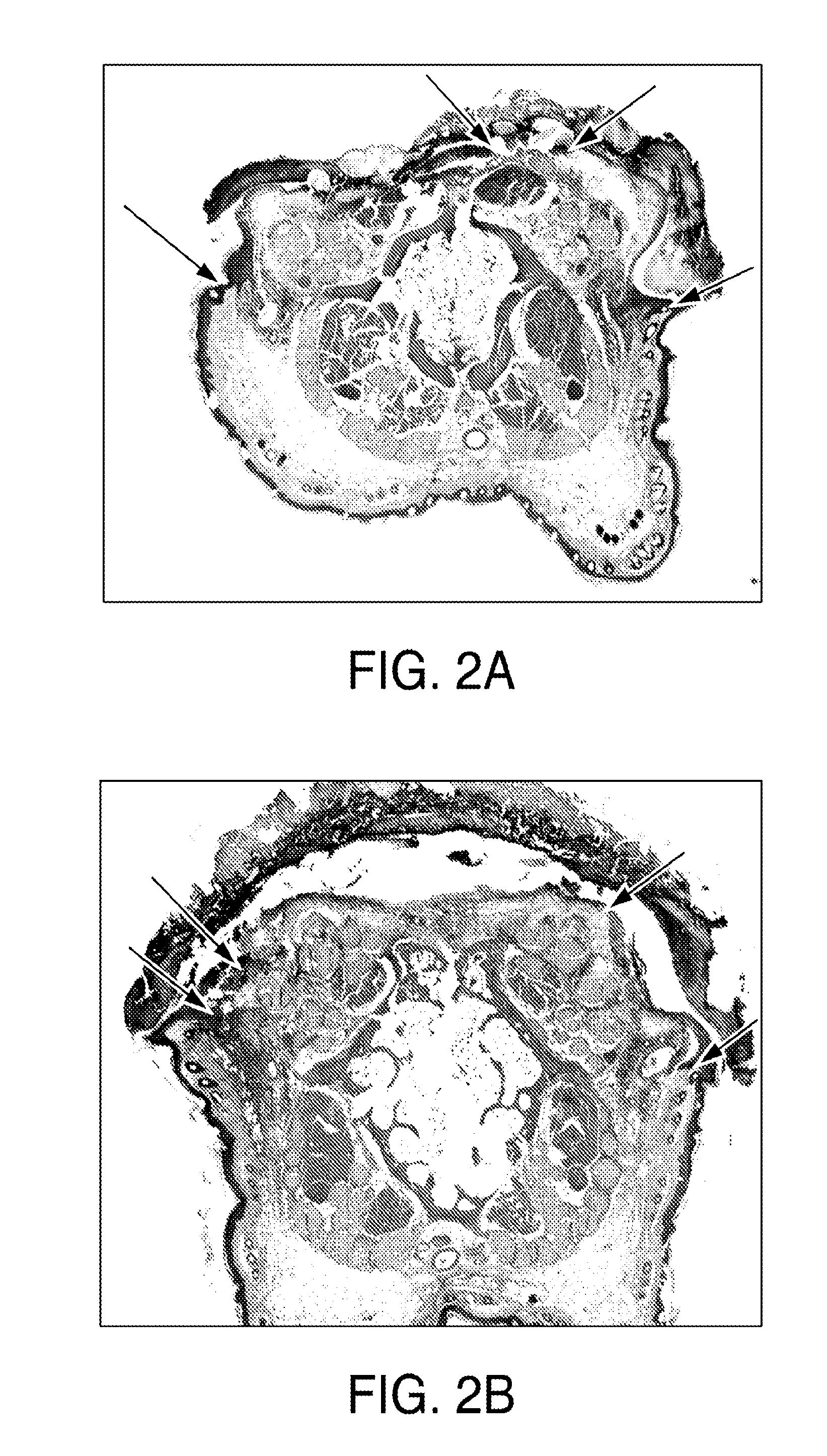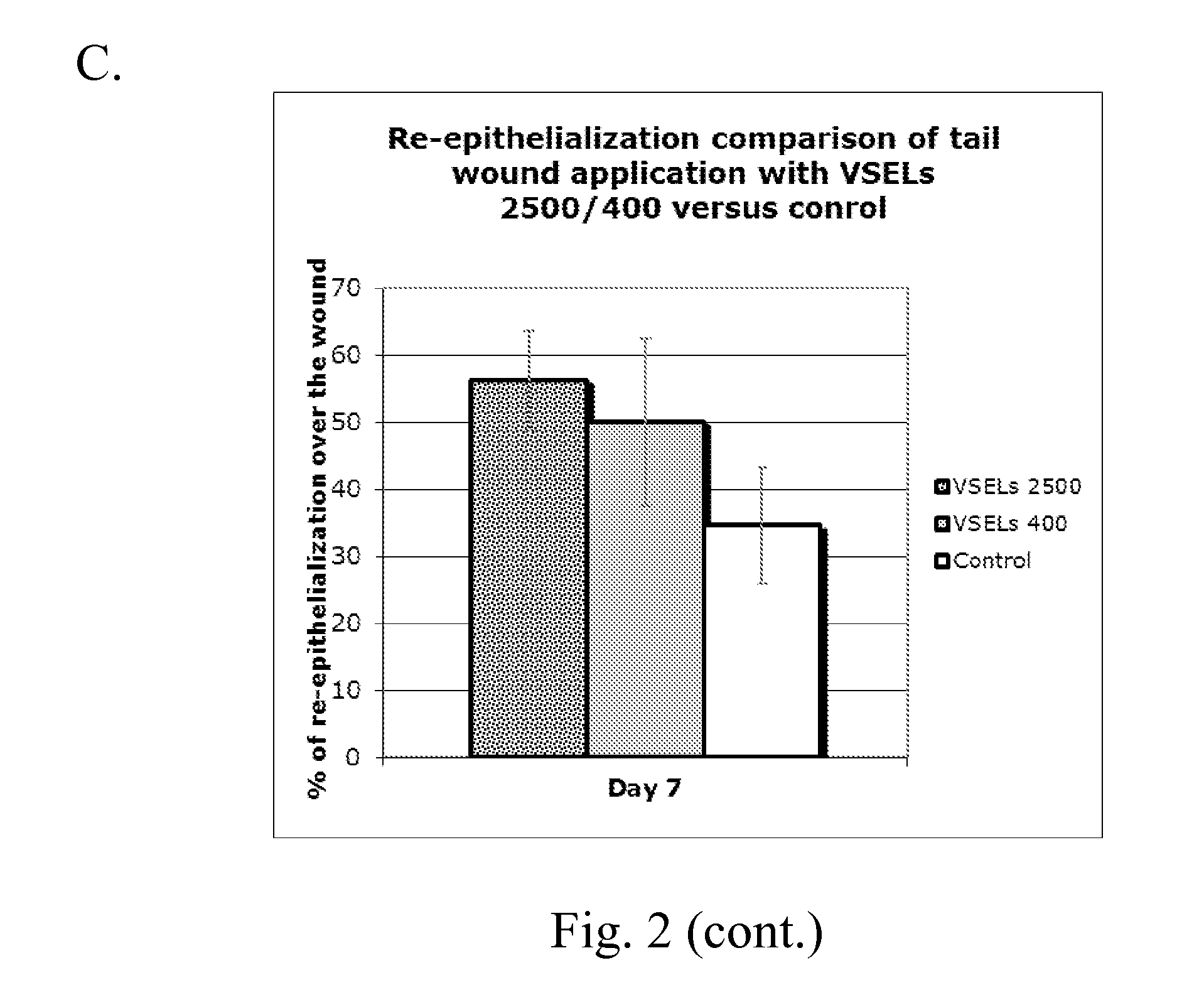Stem cell compositions and methods for would healing
a technology of stem cells and compositions, applied in the direction of drug compositions, aerosol delivery, peptide/protein ingredients, etc., can solve the problems of chronic wounds remaining a formidable challenge, and achieve the effect of effective wound healing, reduced amount of stem cells needed, and extensive treatmen
- Summary
- Abstract
- Description
- Claims
- Application Information
AI Technical Summary
Benefits of technology
Problems solved by technology
Method used
Image
Examples
example 1
[0092]Collection of VSELs—Human VSELs are isolated from G-CSF-mobilized peripheral blood by leukapheresis followed by a 3-step purification procedure. First, smaller cells are enriched by counterflow centrifugal elutriation using an Elutra cell separator (Terumo BCT). Elutra fractions enriched in VSELs (defined for the purposes of purification as Lin− / CD45− / CD34+ and / or Lin− / CD45− / CD133+ cells) are then positively selected using anti-CD34 and anti-CD133 microbeads, and then purified to >98% Lin− CD45− CD34 / 133+ objects by flow cytometric sorting.
example 2
[0093]Fibrin Spray System to Deliver Cells Topically to Wounds—The fibrin delivery method made use of the TISSEEL VH® fibrin sealant system and the TISSOMAT® application device and spray set (Baxter Healthcare, Glendale, Calif.). This preparation contains human fibrinogen and thrombin. The following protocol was used to make a fibrin gel with final concentrations of 5 mg / mL fibrinogen and 25 U / mL thrombin, utilizing a 1 mL TISSEEL VH® kit (Baxter). This kit utilizes two liquid phases that can be either extruded through a dual chamber applicator or sprayed through the applicator with an inert gas carrier. To make the thrombin component, 1 mL of calcium chloride (CaCl2) mixture from the kit was added using a sterile syringe to the 1 mL bottle of thrombin, and the mixture was allowed to dissolve. One part of this solution was then added to 9 parts of sterile 30 mM CaCl2 in normal saline (0.9% sodium chloride [NaCl]). The fibrinogen / sealer protein component was made by adding 1 mL of st...
example 3
[0094]VSEL stem cells are applied up to four times to wounds using a fibrin polymer spray system with a double-barreled syringe. Both fibrinogen (containing the VSELs) and thrombin are diluted to optimally deliver a polymerized gel that immediately adheres to the wound, without run-off, and yet allows the VSELs to remain viable and migrate from the gel. Sequential adjacent sections from biopsy specimens of the wound bed after VSEL application show cells immunostained for VSEL markers. Generation of new elastic fibers can be observed using stains and antibodies to human elastin.
PUM
| Property | Measurement | Unit |
|---|---|---|
| concentration | aaaaa | aaaaa |
| volume | aaaaa | aaaaa |
| density | aaaaa | aaaaa |
Abstract
Description
Claims
Application Information
 Login to View More
Login to View More - R&D
- Intellectual Property
- Life Sciences
- Materials
- Tech Scout
- Unparalleled Data Quality
- Higher Quality Content
- 60% Fewer Hallucinations
Browse by: Latest US Patents, China's latest patents, Technical Efficacy Thesaurus, Application Domain, Technology Topic, Popular Technical Reports.
© 2025 PatSnap. All rights reserved.Legal|Privacy policy|Modern Slavery Act Transparency Statement|Sitemap|About US| Contact US: help@patsnap.com



